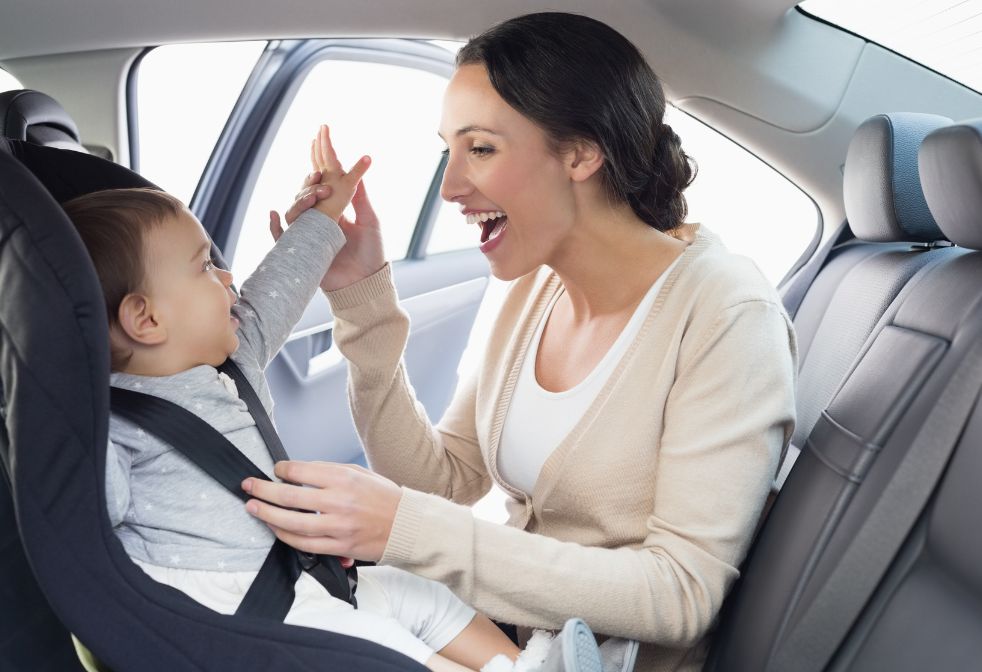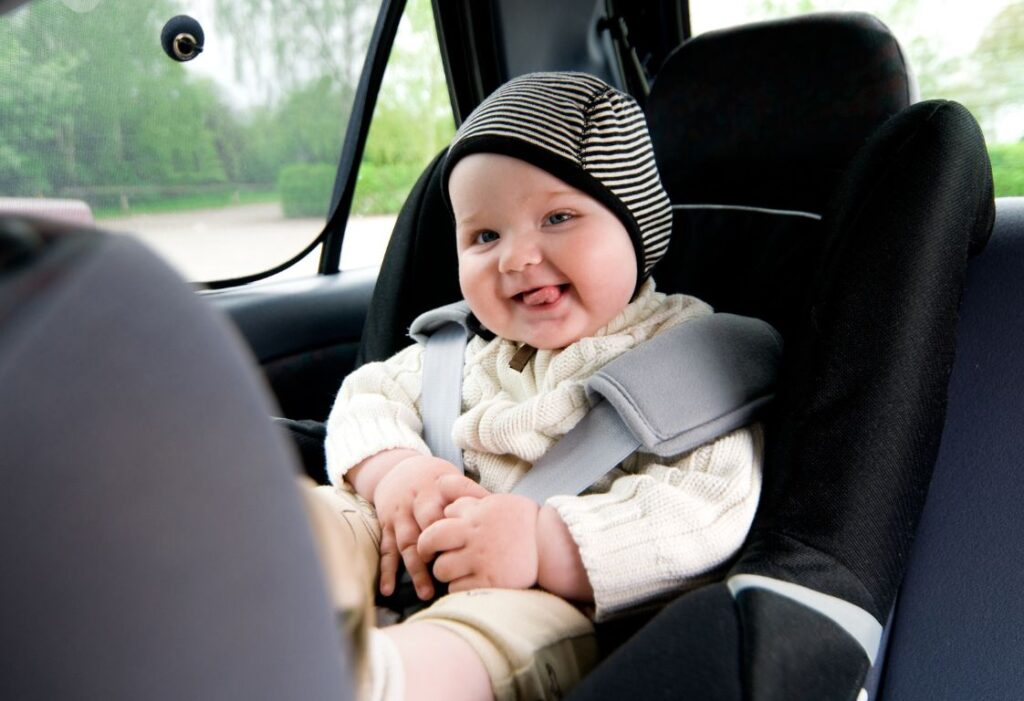Choosing the right time to switch your child’s car seat to face forward can confuse parents. According to the American Academy of Pediatrics, children should ride in rear-facing car seats until age 2 or when they exceed the highest weight or height their car seat manufacturer allows.
This blog offers vital information on understanding safety guidelines, crucial factors to consider before switching, and how to ensure a successful transition. Ready for a safer ride? Let’s dive in!
Understanding Car Seat Safety Guidelines

Safety rules tell us when a baby’s car seat can face the front. Babies should sit in rear-facing seats at first. These seats are best for young babies as they shield them more during crashes.
The force from an accident spreads over their whole body.
The American Academy of Pediatrics (AAP) and car seat makers give height, weight, and age tips to follow. Usually, children up to 2 years old should ride facing the back. This is safer because it protects a baby’s head, neck, and spine better if a crash occurs.
Turning the car seat forward too soon could worsen injuries in a crash.
When to Transition to a Forward-Facing Car Seat

Parents should transition their baby to a forward-facing car seat when they reach the minimum age and weight requirements set by safety guidelines.
Age and weight considerations
Age and weight are critical factors in determining when to switch a child from a rear-facing to a forward-facing car seat. Each car seat model has its specific guidelines, so always refer to the manufacturer’s instructions for accurate information.
| Age | Weight | Car Seat Position |
|---|---|---|
| 0-2 years | Varies | Rear-facing |
| 2+ years | Varies depending on the car seat model and the child's growth | Transition to Forward-facing |
| Under the age specified by car seat’s manufacturer | Under the weight specified by the car seat’s manufacturer | Rear-facing |
| Over the age specified by car seat’s manufacturer | Over the weight specified by the car seat’s manufacturer | Consider transitioning to Forward-facing |
Age and weight are critical factors in determining when to switch a child from a rear-facing to a forward-facing car seat. Each car seat model has its specific guidelines, so always refer to the manufacturer’s instructions for accurate information.
Safety Considerations when Switching Car Seat Direction
Before flipping the car seat, check its limits. Every car seat has age and weight needs set by its maker. Don’t rush to switch too early. A rear-facing car seat gives your baby’s head, neck, and back better safety in a crash.
Carefully read the guide that comes with your car seat. It shows you how to flip it safely from the rear- to forward-facing position. Some seats can face both ways, but not all do this.
For extra help, you may want to talk with a child passenger safety tech person. They know a lot about keeping kids safe on trips in a car.
FAQ:
Keeping your child in a rear-facing car seat for as long as possible is recommended. The American Academy of Pediatrics suggests that children ride rear-facing until they reach the maximum height or weight specified by the car seat manufacturer.
Rear-facing car seats provide better protection for a child’s head, neck, and spine in a collision. This is because the impact forces are distributed over the seat’s entire back rather than concentrated on the child’s head and neck.
The decision to switch from a rear-facing to a forward-facing car seat should be based on the maximum height or weight limits specified by the car seat manufacturer. Once your child outgrows the rear-facing height or weight limit, it is time to make the switch.
There are many great options for forward-facing car seats. Look for car seats designed explicitly for forward-facing use, and check for reviews and safety ratings to ensure you choose a high-quality product.
Installing a forward-facing car seat typically involves using the seat belt or the lower anchors and tethers for children (LATCH) system. Always refer to the manufacturer’s instructions and ensure the seat is installed correctly for maximum safety.
Keeping a child in a rear-facing car seat is generally recommended until they are at least one year old and weigh at least 20 pounds. However, it is best to follow the specific height and weight limits recommended by the car seat manufacturer.
Children with certain medical conditions may sometimes require specific car seat recommendations. It is best to consult with your child’s doctor or a certified child passenger safety technician to determine the best course of action for your child.
To ensure your child’s safety in a forward-facing car seat, ensure the seat is properly installed, the harness is snug and correctly positioned, and your child meets the height and weight requirements specified by the car seat manufacturer.
For extra help, you may want to talk with a child passenger safety tech person. They know a lot about keeping kids safe on trips in a car.
Conclusion
Choosing the right time to switch your baby’s car seat to face forward is a big step. You should always think about age and size first. Check with the car seat maker for limits and rules.
Keep an eye on recalls, do regular checks, and ensure it fits right in your car’s back seat
